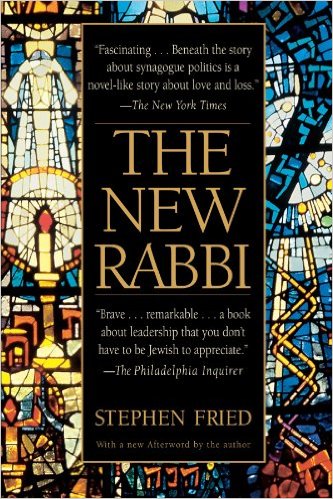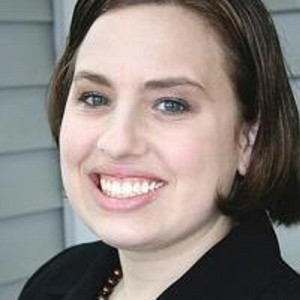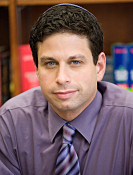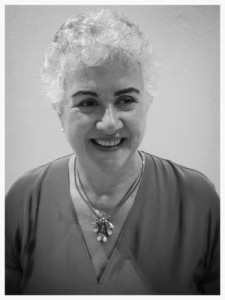A Generous Community
[What goes into the making of a 21st Century rabbinical leader? In this latest series of essays to be published on eJP, we share thoughts from Rabbi David Teutsch, Ph.D., Rabbi Ellen Lewis, Rabbi Daniel Cotzin Burg and Rabbi Hayim Herring, Ph.D. The first three essays originally appeared in, “Keeping Faith in Rabbis: A Community Conversation on Rabbinical Educartion,” Avenida Books, December 2014. This final essay is newly written for eJP and looks at how we may respond to the paradigm shift currently underway in the North American Jewish Community.]
*****
Writing an essay for a publication is a generous act, so thank you to the thirty-three contributors – rabbis, lay people and educators of rabbis – to the print volume of Keeping Faith in Rabbis: A Community Conversation About Rabbinical Education and the ten essayists whose essays appear online. With all of the changes occurring within the Jewish community, generosity has been a constant.
I had planned to write a chapter for our anthology, but Ellie Roscher, my co-editor, suggested that I wait and follow the conversation before doing so. Indeed, we came to appreciate how much our respective faith communities could benefit from more curiosity and less judgment about the correct “formula” for clergy education, and more shared conversations with those from other faith communities.[1]
Having listened to the conversation for about a year, I now offer what I believe is the most significant observation for rabbinical education: It is urgent to explicitly acknowledge that the paradigm of Jewish community that gave birth to how we educate rabbis has ended and respond accordingly. Several essayists alluded to a paradigm shift, and their actual and proposed curricular changes illustrated their keen awareness that it had already occurred. But the emergence of a new paradigm is not synonymous with an innovative curriculum, a new rabbinical program or a novel continuing education program. Rather, it is a map for reading, interpreting, responding to and shaping the community that we aspire to be.[2]
What is a Paradigm Shift and How Do You Know When a Paradigm Has Shifted?
What is a paradigm and how do you know it has shifted?[3] I think of a paradigm as a set of lenses through which I read my world of experiences. Without these lenses or core assumptions, I would be unable to sort, categorize, analyze and make meaning of my encounters with other individuals and interpret all of the information that I absorb through the media. Absent a paradigm, all actions, changes and behaviors are relatively equal to one another. With a paradigm, I have greater likelihood of living the life that I want and trying to positively shape my future.
Joel Barker, renowned for his work in applying the concept of paradigms to organizations, identifies how to recognize a paradigm shift in his definitive video on the topic, “The New Business of Paradigms” (updated 2013 edition): “No matter how tall your skyscrapers, or how big your market share, or how global your organization, when a paradigm shifts, everyone goes back to zero. Your past success guarantees nothing in your future.” Barker did not have the Jewish community in mind when he stated this, but he just as easily could have.
How Paradigms of Jewish Community Influence Rabbinical Education
The enduring paradigm of the modern Jewish community that gave birth to established and even most new rabbinical programs is disintegrating. It originated in Western Europe in approximately the mid-19th Century, was grafted and took root in the United States toward the end of the 19th Century and reigned through about the last decade of the 20th Century.[4] It rested upon certain givens that included defined boundaries of nations and communities, the subordination of the individual to nation and community, a belief in rational, planned, linear progress, stable bodies of knowledge that needed to be mastered to attain the status of an authority, a dynamic tension between requirements of Judaism and expectations of citizenship, and organizations as self-contained, closed systems.
During the early decades of this paradigm, even if Jews did not practice ritual, they established and joined congregations because it was a way of fitting into Protestant America. The informal names of their congregations (e.g., the “Hungarian shul”) reflected their immigrant roots even as they strove to rapidly acculturate their children to America, a process that accelerated as Jews later migrated to the suburbs. The reality of a modern State of Israel was added to the paradigm of Jewish community in the mid-20th Century, but Israel was a fragile entity that was usually portrayed in mythical terms. It was also dependent upon American Jews’ commitment to its survival, using their significant political and financial capital.[5]
In the recent past, there was a logical division of labor that grew from the paradigm of linear, self-contained, defined organizational boundaries. The Federation system and its “beneficiaries” were responsible for the secular welfare of local and global Jewish communities, and congregations and related denominational structures tended to the religious and educational needs of Jewish communities. The lines between the federation and congregational systems began to blur soon after Israel’s Six Day War, when federations gradually started to support formal and informal Jewish education, and congregations stepped up their public support for Israel.
These are blunt generalizations, as paradigms are more akin to glasses used to perceive the broad contours of the environment. But they also obscure gradual, significant changes that point to a possible paradigm shift. And by the time the 1990 National Jewish Population Survey was released, you could already see fractures in the paradigm of Jewish community: declining levels of Jewish identification, rising rates of intermarriage, disillusionment with the Jewish establishment, and the corresponding rise in “mega” donors and family foundations that challenged existing communal priorities.
In the 21st Century, we can now clearly see a new paradigm of a world characterized by human networks that can swell swiftly to upend governments or fund game-changing products; an unbounded start-it-yourself and share-it-with-others ethos; and, heightened influence of lone individuals, ephemeral crowds, and enduring social networks. Individuals have the ability to span cultures, geography and time, and relatively small groups have the means to violently shift national borders.
The American Jewish community has naturally been affected by this new zeitgeist. For many Jews today, the beliefs, behaviors and values that animated the Jewish community have lost their former power. Beliefs don’t hold people. Rather, people hold beliefs – and may discard them when they no longer “work,” customize “new traditions,” or design Jewish rituals drawn from multiple faith traditions. As a result, we might call the Jewish community of the United States, “Jews Without Borders.” Here are a few examples to illustrate the porous, fluid nature of much of the Jewish community in the United States:
Increasingly, well-established professional pipelines through which senior organizational leaders were hired are being bypassed. In fact, the 92nd St. Y hired a C.E.O. who is not Jewish.
Decades ago, Israel generally tended to galvanize more than polarize; today, it appears that the opposite is increasingly true.
Not long ago, intermarriage was perceived as a taboo; today, outside of the Orthodox community, speaking against intermarriage is often considered a taboo, and rabbinical school faculty and students debate the merits of admitting future students who are married/partnered to those who are not Jewish.
Organizations like federations and Jewish Community Centers may still describe themselves as the “central address” of the Jewish community, but in today’s highly decentralized Jewish community, “boutique” organizations compete with “legacy” institutions.
Eighty-one percent of Jewish Boomers identify as Jewish on the basis of religion, and 19% describe themselves as having no religion; among Millenials, 68% identify as Jewish on the basis of religion, while 32% describe themselves as having no religion and identify as Jewish on the basis of ancestry, ethnicity or culture (Pew Research, “A Portrait of American Jews,” October 2013).
Synagogue budgeting and programming implied that a “normal” Jewish family was a heterosexual married couple with children; today, LGBTQ families, individuals who are living with or married to non-Jews, have asserted an equal place in congregations and broadened the definition of a “Jewish” household.
It’s no longer possible to say, “Not in my lifetime” to prospects of female Orthodox rabbis. By title or by function, they are now a reality. Through the early 1990’s, the major funding stream for Jewish programs and infrastructure was the national federation system. In the early 1990’s, “mega” and family foundations began to provide a massive infusion of funds into new and established organizations that better reflected their interests. Crowd-funding platforms like Kickstarter and more recently, Jewish Giving Circles supported by Amplifier, may soon provide alternatives and challenges to these current primary options.
Money, power, knowledge, organizing, influencing, communications and inverted attitudes on major social and religious issues – these discrete changes have converged into a paradigm shift that has disrupted much of the old order of the Jewish community and ushered us into a new one. This new paradigm is characterized by instability, surprise sometimes bordering on chaos, improvisation, divergent thinking, emergent grassroots mobilization and ownership, irreverence and entrepreneurship. Who gets to decide what is authentically Jewish in this new paradigm? For Gen X’ers, Millenials and increasingly, Boomers, not Jewish authorities, but basically, anyone.[6]
The paradigm of Jewish community that existed until recently generated beliefs about the “right” kind of rabbinical student profile, fixed canons of knowledge that students needed to master (curricula), the structure of relationships between “lay people” and rabbis, the nature of religious authority and decision-making, and rabbinical career choices and trajectories. The in-print and online essayists in Keeping Faith in Rabbis: A Community Conversation About Rabbinical Education have supplied us with ideas, questions and observations about the adequacy of rabbinical education and leadership. They point toward the issue of a paradigm shift that we need to make explicit. Without being explicit, we may convince ourselves that new strategies and tactics for rabbinical education are moving us into the future, while in reality they only affirm the old paradigm of Jewish community.
Those who have dedicated significant years in the Jewish community are entitled to linger and feel sad over what we have lost. By pausing, we may then be better able to perceive new opportunities that were unimaginable and lead with optimism. As we internalize a new paradigm of Jewish community, I conclude with several questions emanating from this new paradigm:
Even if seminaries retain denominational identity, could administrations make it easier for students to cross-register for some courses if they are living in the same city, or take one another’s online courses?
How much seminary real estate is actually necessary for rabbinical education? Do rabbis have to be in residence for a total of five years at two different locations (the States and Israel), amassing significant debt, or could more schools adopt a learner-centered approach, and customize educational requirements and programs around the knowledge and experience of the learner?
What role does Israel play in rabbinical education and expectations of rabbinical leadership? Many American Jews find meaning in Judaism’s call for social justice and perceive Israel to be the powerful Goliath against a pitiful Palestinian David. West Bank Palestinians lack sovereignty – an undignified reality for which Israeli and Palestinian leaders are responsible. What are the implications for the relationship between Jewish communities in Israel and the United States? In Keeping Faith in Rabbis, there was no discussion of Israel – not completely surprising but ominous.[7]
In the 21st Century, what is it that rabbinical education uniquely qualifies rabbis to do? Rabbinical chaplains seem to have a clear answer: provide spiritual care. With that exception, some of these essays reflected realities of role displacement and ambiguity. Are curricular options for rabbis who plan to operate outside of congregations and established organizations sufficient?
Many young Jews are now fourth and even fifth generation Americans and deeply assimilated. As a result, how should rabbis-in-formation think about Jewish peoplehood today?
In past epochs, periods of social and technological turmoil were followed by times of stability: for example, transitioning from agriculture to manufacturing. Today, with powerful technologies that are becoming universally accessible, stability is elusive and disruption is the norm. Can and should rabbis be trained as pioneers into an unknown Jewish future, yet still remain knowledgeable and caring guardians of Tradition?
Should theological education encompass mixed multi-faith clergy ordination programs that allow for shared experience and learning across different faiths for some courses, even as students focus intensively on the fundamentals of their own religious civilizations?
Many Millenials are experiencing downward economic mobility because of forces beyond their control. Combined with some of these other factors, from where will the financial and human capital come to support the array of old and new Jewish organizations that exist today?
The questions that I find the most fruitful don’t have immediate answers, require a collaborative, multi-disciplinary approach to incubating responses, and validation through research and practice. The contributors to Keeping Faith in Rabbis: A Community Conversation on Rabbinical Education are well attuned to the need for change and continue to respond to it. Will we make a wider space for conversation together to explore these and other questions that emerge from a new paradigm of Jewish community?
[1] See Ellie Roscher, Keeping the Faith in Seminary (Minneapolis, MN: Avenida Books, 2012). The series of essays that she edited on Protestant theological education inspired Keeping Faith in Rabbis.
[2] The one program that seems to have acknowledged this is Aleph: Alliance for Jewish Renewal.
[3] Thomas Kuhn in his book, The Structure of Scientific Revolutions published in 1962, originated the concept of paradigm in the scientific world. Joel Barker, a preeminent business process futurist, was the first to grasp that despite Kuhn’s claim to the contrary, it applied far beyond the world of science. But the concept of paradigms is not new and features prominently in learning theory and psychology already in the 1920’s, although it is more often labeled “schema,” “scripts” or “mental models.”
[4] See Windmueller, Steven (2007). “The Second American Jewish Revolution,” Journal of Jewish Communal Service, Volume 82 (No. 3), pp. 252-260, for a comprehensive review of the organizational paradigm and its value set from the last century.
[5] See Jonathan Woocher, Sacred Survival: The Civil Religion of American Jews. (Bloomington, IN: Indiana University Press, 1986
[6] See, for example, Stephanie Grob Plante, “The Challenge of Planning an Interfaith Wedding,” November 13, 2014, http://tabletmag.com/jewish-life-and-religion/186563/challenge-interfaith-wedding
[7] See Steven M. Cohen and Rabbi Jason Gitlin, “Aversion to Expressing Views on Israel Among American Rabbis,” A Report of the Jewish Council of Public Affairs (October 8, 2013), http://www.jewishdatabank.org/studies/downloadFile.cfm?FileID=3075.
Cross-posted to eJewish Philanthropy and the Huffington Post
Rabbi Hayim Herring, Ph.D., is an author, presenter and organizational futurist. He thanks Dr. Steven Windmueller for reviewing an earlier draft of this article.







